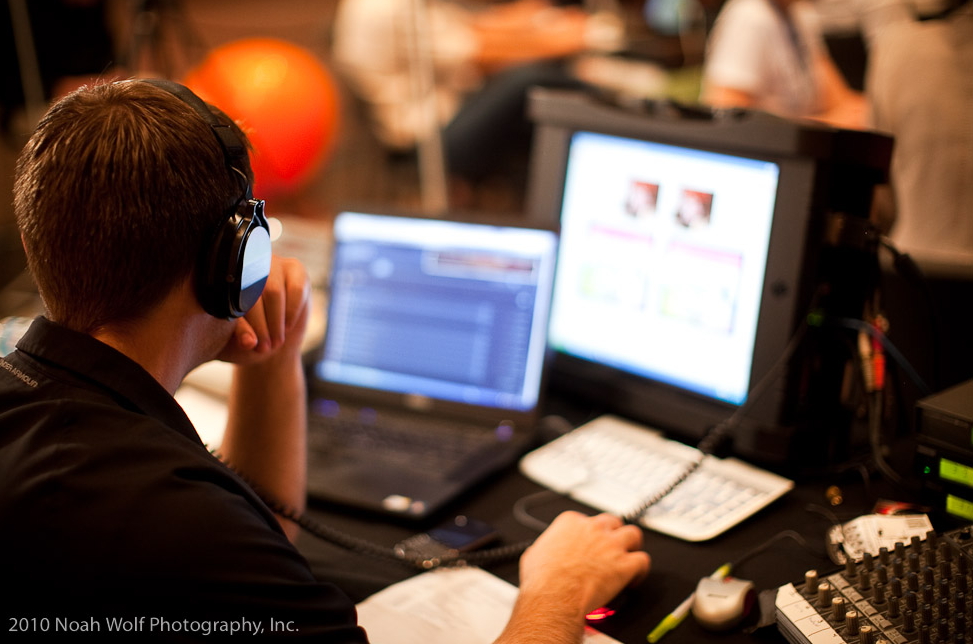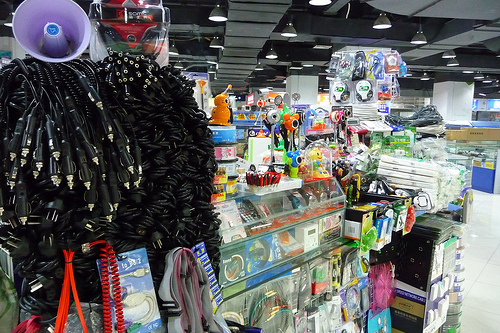The cost of hybrid events

I counted ten full-time staff needed to create the remote component of this amazing event, which delivered an impressive participative and immersive remote audience experience.
Virtual Event Design Consultant / Project Manager
Virtual Emcee: The Host of the Remote Broadcast
Tech Director: Calls the show, video camera shots and switches
Twitter Moderator: Captures questions, comments and ideas from the audience
Soundbyte Tweeter: Tweets Out Speaker highlights under the event’s Twitter ID
Main Session Cameraman
Studio Cameraman
Mediasite Tech: Manages video, audio and VGA feeds going into Mediasite system
A/V Tech: Manages the House signals
A/V Tech: Manages the Video and Audio Switches for Remote Audience
Most, if not all, of these people needed to be around for at least half a day before the live event. And none of them (I hope) are normally paid minimum wage.
The equipment and technology
2 Cameras: One for the main room and a second for the studio
2 Camera Tripods
3 Laptops for Virtual Emcee, Twitter Moderator and Fact Based Tweeter (if not the same person)
2 Studio Microphones (These are linked to webcast – but not house sound.)
3 House Sound Microphones
Riser – to make the tripod sit over everyone’s head
Media Site Player (this is the webcasting gear)
Video Switcher
Interview Studio (Table, Chairs Backdrop, Professional Lighting)
Twitter Hashtag
Event Twitter Account
Webcast Player (Mediasite provides this – but can be configured)
Intefy System (Virtual Front Door that shows video, schedule plus twitter streams)
Hosting Server for Storing and Hosting Streaming Video
Various and sundry cables to connect and power everything
All this does not usually come for free. I’m not privy to the financial details of EventCamp Twin Cities, but I do know that the companies and personnel involved donated much of the above. Such generosity is and was much appreciated by all of the local and remote attendees. These substantial sponsorships of the event made it possible to offer free remote passes to the remote audience, making it easy for 500+ people to tune in and enjoy a superb remote audience experience.
What I’m wondering about is the economics of creating hybrid events when the time of donations disappears, and the fine folks at companies like Intefy, SonicFoundry, and Allied Productions & Sales, need to get paid for their time, equipment, and expertise.
The economics
I’m guessing that the regular price tag for a setup like the one used at EventCamp Twin Cities might run in the region of $30,000. (Please, those of you who actually know what these costs are; stop laughing and enlighten us.) If so, that translates into a cost of around $60 per remote ECTC attendee.
Perfectly justifiable if that attendee would otherwise have to pay for a plane, accommodations, travel time etc. to attend in person.
But not free.
Another thing to bear in mind is that the costs to provide the two-way interactivity that was a hallmark of ECTC were largely fixed; they’d be more or less the same if 100 or 1,000 people had showed up. In the former case, the cost becomes $300/attendee—an amount that might be a concern for many event planners working with small or highly specialized target audiences.
I don’t see many possibilities for reducing the personnel numbers and outlay required to run a good hybrid event. I expect that equipment and bandwidth costs will decline in the future, but I’m willing to bet that the expense to add a remote audience with the capability for meaningful participation will remain a significant component of a hybrid event’s budget for a long time.
What do you think of the hybrid economics I’ve described? Can you provide better figures for the expense to add a remote audience to a hybrid event? Will the relative costs and rewards act as a deterrent to you to add a remote audience—or do you see them as an income producing opportunity?
Image attribution: Noah Wolf Photography

